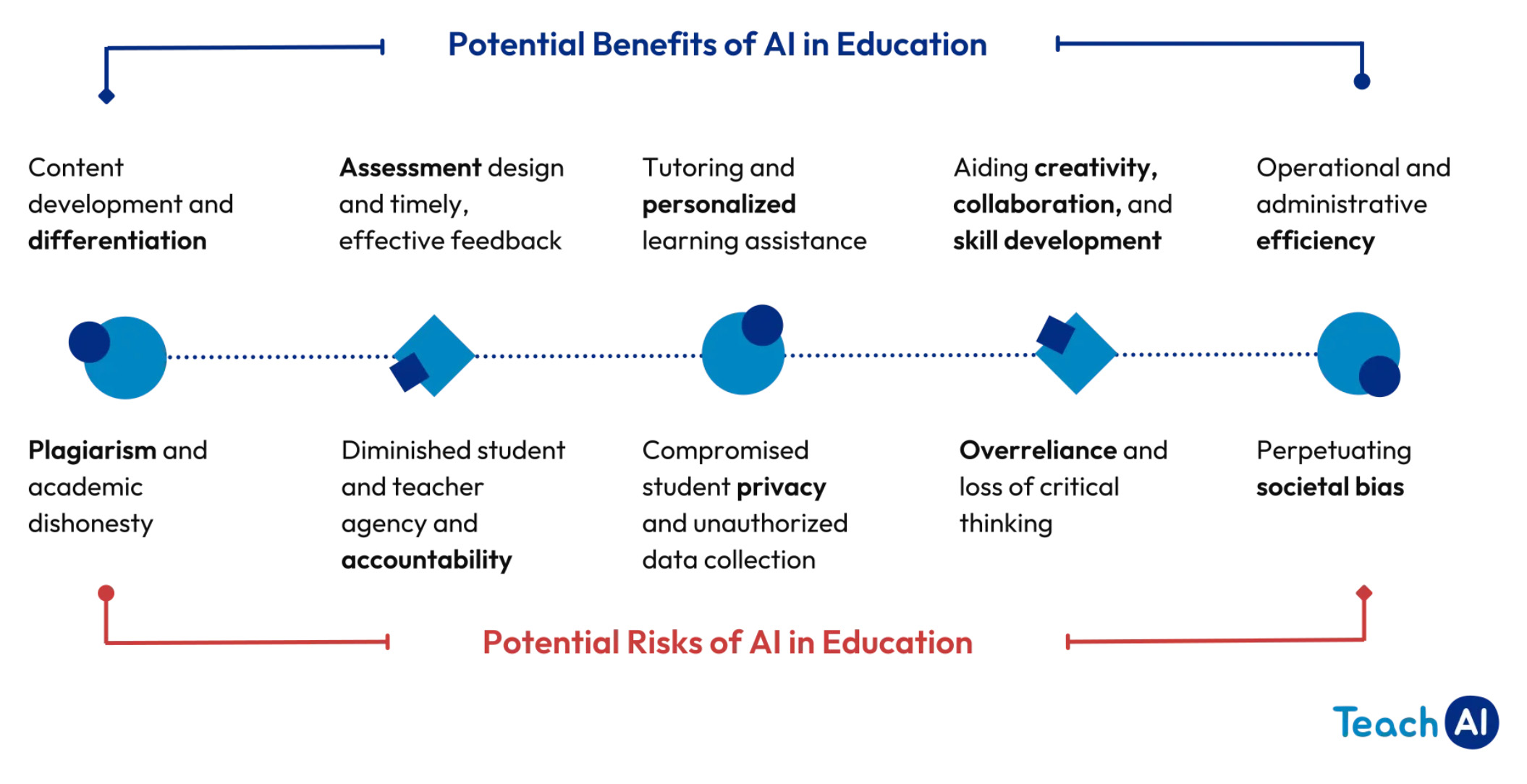Risks & Benefits of Teaching AI

Caption: Teach AI, www.teachai.org/toolkit, created this flow chart depicting the benefits and risks of AI in Education. Benefits include content development, assessment design, tutoring assistance, skill development and efficiencies while risks include concerns around plagiarism, accountability, privacy and bias.
AI for Teaching & Learning
In this video (39:27), learn how to get started with Microsoft Copilot.
Teaching and Learning
- Personalized learning: Create tailored content, feedback and guidance for students based on their individual needs and learning styles.
- Content creation: Brainstorm materials such as quizzes, rubrics and assignments.
- Communication: Draft emails, announcements, event promotion and other communications.
- Brainstorming: Gather new ideas for research, group projects and academic papers.
Course Planning & Assignment Design
Consider using AI to create:
- Concept maps (or Mind Maps using NotebookLM) showing relationships between key ideas.
- Explanations of complex concepts in multiple formats (e.g., analogies, step-by-step breakdowns, etc).
- Scenario-based learning exercises.
- Logical learning sequences.
- Activities where students compare human and AI approaches to problem-solving.
- Projects that combine AI tools with traditional research methods.
- Diverse discussion prompts that encourage critical thinking and problem solving.
- Draft assignment rubrics that can then be customized for specific needs (from AI for Education).
Literacy and Learning for Faculty
The AI Challenge module for Faculty (4:55), is a self-paced design-forward module created to build faculty capacity with generative artificial intelligence, covering the fundamentals of teaching with, teaching against and teaching about Generative AI.
Practical AI for instructors and students (10:16): This video is part 1 of a five-part course in which Wharton Interactive provides an overview of AI large language models for educators and students including how to work effectively with each model, how to use AI to make teaching easier and more effective and how students can use AI to improve learning.
Additional Resources
- AI for Education's free two-hour Essential Guide to AI for Educators (intro video 1:15).
- Stanford Accelerator for Learning hosted the third AI+Education Summit, bringing together researchers, K-12 leaders, educators and technologists to explore how AI is shaping teaching and learning (videos & article, 2025).
- 60 Ways to Use GenAI for Assignments - University of Central Florida faculty lead research initiative (Open Educational Resource - OER, 2023).
- 101 creative ideas to use AI in education, a crowdsourced collection funded by the European Commission (EU); OpenAIRE a European non-profit organization and CERN, UNESCO's European Council for Nuclear Research (in French Conseil Européen pour la Recherche Nucléaire) (OER, 2023).
- MLA Task Force on AI in Research and Teaching (2025) is charged with encouraging critical engagement with generative AI literacy by creating timely resources and developing advocacy strategies for teachers, students, and researchers.
- Exploring AI Pedagogy: A community collection of teaching reflections: A collaborative resource featuring insights and strategies navigating AI’s role in writing instruction.
- The Artificial Intelligence Assessment Scale (AIAS): A Framework for Ethical Integration of Generative AI in Educational Assessment, Journal of University Teaching and Learning practice, 2024.
- An introduction to the use of generative AI tools in teaching, University of Oxford, 2024.
- Artificial Intelligence in Education, National Education Association report 2024.

